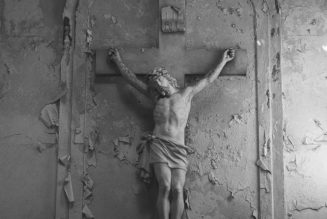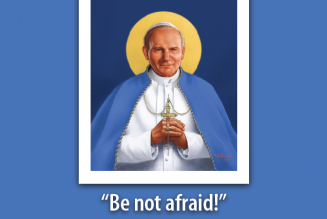By Dr. Jeff Mirus ( bio – articles – email ) | Jul 21, 2022
Pope Francis’ Apostolic Letter on the Liturgy, Desiderio desideravi, officially promulgated on June 29, 2022, is a remarkably rich document, and one which all those who comment on the liturgy today must read if they wish to be taken seriously. It is also true that its insights and claims raise questions which any committed Catholic ought to consider seriously as time goes on.
Let me clear away one potential obstacle at the outset. Anyone who has followed Pope Francis’ public comments and interviews, on the one hand, while reading the official texts he promulgates, on the other, recognizes that Pope Francis does not write these texts himself. He clearly relies heavily on scholars he admires. Neither the forms of theological and spiritual expression nor the systematic development of the texts are characteristic of Pope Francis’ ordinary manner of thinking and speaking. He guides and edits, certainly, and many popes have taken the very same approach. But after the scholarly John Paul II and Benedict XVI, whose official documents so precisely matched the tone and content of their personal remarks, this can be a bit confusing. In fact, the difference in tone, and often in substance, between personal remarks and official texts in the current pontificate is perhaps as striking as it has ever been in modern history.
Nonetheless, there is great beauty and facility of expression in Desiderio desideravi. Every Catholic should read and be nourished by it.
Flies in the ointment, 1: Liturgical continuity
The two fundamental “snags” in the text are found in Francis’ treatment of what we might call continuity and mystery. Let me say at the outset that the prescribed norms for the Roman Rite today have the full force of ecclesiastical authority behind them (as had the previous form of the Roman Rite, recently called the Extraordinary Form, and now all but completely suppressed). There is no question about this, and certainly obedience demands the reverent reception of the authoritative Missal. Nonetheless, there are two continuing concerns about the current form which make it more difficult for some Catholics to receive the liturgical norms happily, and these concerns are not admitted as weaknesses of the current rite in Desiderio desideravi.
The first snag is the presumption that the current liturgy in force for the Roman Rite represents the type of liturgy which the Second Vatican Council itself decided was most appropriate for the Church going forward. This claim is both assumed and stated, but the evidence is not particularly strong. A good (if very broad) way to get at this problem is to ask whether the current form of the liturgy (including as very often celebrated) successfully embodies the following fundamental features as outlined right from the first in Vatican II’s Constitution on the Sacred Liturgy in the section on “The Nature of the Sacred Liturgy and its Importance in the Church’s Life”:
- “Every liturgical celebration, because it is an action of Christ the Priest and of his Body, which is the Church, is a sacred action surpassing all others. No other action of the Church can equal its efficacy by the same title and to the same degree.” (7)
- “In the earthly liturgy we take part in a foretaste of that heavenly liturgy which is celebrated in the Holy City of Jerusalem toward which we journey as pilgrims, where Christ is sitting at the right hand of God, Minister of the holies and of the true tabernacle.” (8)
- “The liturgy is the summit toward which the activity of the Church is directed; it is also the fount from which all her power flows.” (10)
- “From the liturgy, therefore, and especially from the Eucharist, grace is poured forth upon us as from a fountain, and the sanctification of men in Christ and the glorification of God to which all other activities of the Church are directed, as toward their end, are achieved with maximum effectiveness.” (10)
The question here is whether the current form of the liturgy, at least as commonly celebrated, tends to be a kind of “vertical” (that is, transcendent) experience which draws us into the sacred mysteries which the liturgy celebrates and seeks to make present to us, or whether it tends to be a very “horizontal” (that is, immanent) affair which falls back into a celebration of a very human community not yet absorbed in these mysteries. If we examine the liturgical texts, we find ample evidence for the former. If we examine the cumulative impact and, in particular, the musical settings used at Mass and the decorum observed in connection with the rite, we may reach a very different conclusion.
Flies in the ointment, 2: Mystery
The second snag is one which Pope Francis actually addresses—the question of mystery and the emphasis on the importance of being drawn into the Sacred Mysteries. Pope Francis desires this, but he suggests that we are not to be engaged in mystery through any sort of ritual mysteriousness. He seems not to understand that a certain ritual mysteriousness—not the mysteriousness of obfuscation, but rather a ritual indication of the ineffability of the sacred mysteries themselves—is actually proper to liturgy. In fact, he specifically derides this, writing:
If the reform has eliminated that vague “sense of mystery,” then more than a cause for accusations, it is to its credit. Beauty, just like truth, always engenders wonder, and when these are referred to the mystery of God, they lead to adoration. (25)
Even if one grasps the distinction the Pope is trying to make, this is inadequate liturgical theology. Beauty, just like truth, ought to engender wonder, of course, but it is part of liturgical artistry to provide cues to when the rite is deliberately invoking our sense of the “otherness” of the sacred, and this is precisely not to obscure it but to bring it into spiritual focus. This is a focus which goes beyond a mere text, in order to make the mystery itself an object of human yearning, a reality before which we cannot but recognize both our unworthiness and the immensity of the grace received.
To his credit, however, the Holy Father devotes a considerable section of the Apostolic Letter to the problem that modern man (i.e.,modern culture) has all but lost the capacity to appreciate symbols—in the sense that we should catch a greater glimpse of the richness to which symbols and symbolic actions point. This is true in Scripture, in which we must learn to interpret Old Testament texts typologically, as pointing always to Christ, and New Testament texts eschatologically as pointing ultimately to the New Jerusalem and God Himself. But it is also a need in the liturgy, in which we moderns too often participate as if everything existed solely on a material plane.
So Francis has much to offer here, but many would suggest he does not fully understand the interplay between symbols, including ritual actions, and the mysteries to which they point, and which, during the Mass, they actually make real and present to us—if our eyes are opened to see liturgically.
A few specific things
One more thought on all this: Even if we prescind from the general goals the Council had in mind and look at some of the specific stipulations, we find very specific evidence that, while mandated by legitimate apostolic authority, the liturgy as we know it today lacks continuity with the liturgy the Council prescribed. Because this is so easily verifiable, it is troubling when Pope Francis keeps insisting that what we have now is exactly what the Council wanted, thereby claiming a weightiness for the current form that may retard rather than advance authentic renewal.
Thus, to take two very simple examples, the Council specified the following:
- “(1) The use of the Latin language, with due respect to particular law, is to be preserved in the Latin rites. (2) But since the use of the vernacular whether in the Mass, the administration of the sacraments, or in other parts of the liturgy, may frequently be of great advantage to the people, a wider use may be made of it, especially in readings, directives and in some prayers and chants.” (36)
- “The treasury of sacred music is to be preserved and cultivated with great care. Choirs must be assiduously developed, especially in cathedral churches. Bishops and other pastors of souls must take great care to ensure that whenever the sacred action is to be accompanied by chant, the whole body of the faithful may be able to contribute that active participation which is rightly theirs.” (114) And: “The Church recognizes Gregorian chant as being specially suited to the Roman liturgy. Therefore, other things being equal, it should be given pride of place in liturgical services.” (116)
Oops!
Even Pope Benedict suggested that a fusion of the best elements of the Novus Ordo and the previous Latin Mass might be a good solution to the obvious problems, which he recognized. Greater incorporation of Latin, wider use of Gregorian chant, and the priest facing away from the people while offering the Sacrifice of Christ to the Father might go very well in the richer Scriptural context of the current liturgy, along with its more intelligible emphasis on the principal parts of the Mass, and its wider congregational participation. Still, constant liturgical change is in itself an undesirable way to proceed. The permanent things are rarely communicated through constant change.
Thus, even Benedict, who saw the problems, did not forge a solution. But neither did he claim that the liturgy we have is the one the Council itself wished to give to the Church. The whole Church would benefit from a frank and fundamental honesty on this point, and a consequent serious reflection on how best to proceed.
Conclusion
I have long held the position that it is not the specific form of the liturgy that is the ultimate problem. Western materialism had already overtaken the Church by the time of the Second Vatican Council. It is a monumental testament to the Holy Spirit that the actual texts of the Council proved, on the whole, so rich and sound, apart from a certain optimistic lack of awareness of the dangers of non-missionary interaction with the modern world in the “Pastoral Constitution on the Church in the Modern World” (emphasis added to make clear that this was not one of the Dogmatic constitutions, which were those on the Church, on Divine Revelation, and on the Liturgy).
In any case, the Western world, including the Western Church, had been slipping into ever-greater secularization throughout the twentieth-century, especially in the universities, as the shell of moral culture disintegrated in ways that were finally openly celebrated in the very decade in which the Council met. We must never forget that those who discussed the liturgy at Vatican II (and who changed it rubrically and non-rubrically beginning in the late 1960s) were all formed and nourished by what we refer to as the Tridentine Rite. To those who constantly argue that only the older liturgy can protect us from the spiritual banality of modern life, I can only reply, “Well, it had its chance, and it didn’t.”
My favorite mantra has always been: “It’s the culture, stupid!”
Liturgy is also a kind of culture, and it can, in the right hands, be formative of culture in those who worship in accordance with it. But we also need clear thinking in those who talk (and write!) about such things, and a concerted effort at re-evangelization, and a reimposition of ecclesiastical discipline, and unfailing catechesis, and both moral and sacramental courage, and a smaller and more apostolic Church instead of the institutionally-hampered vestiges of the one we have today.
And, yes, if we can teach others to appreciate symbols as pointing to realities beyond the material, and to welcome sacred mysteries, that would be a great way to start.
Sound Off! CatholicCulture.org supporters weigh in.
All comments are moderated. To lighten our editing burden, only current donors are allowed to Sound Off. If you are a current donor, log in to see the comment form; otherwise please support our work, and Sound Off!

There are no comments yet for this item.
Join Our Telegram Group : Salvation & Prosperity










